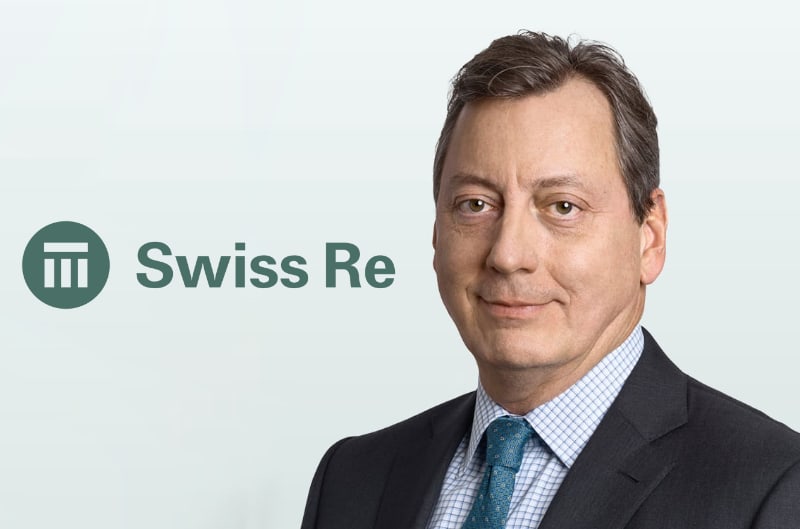Climate change concerns need addressing for ILS capital to flow: Swiss Re’s Dacey

In order for capital to flow more meaningfully back into insurance-linked securities (ILS), John Dacey, the CFO of global reinsurance firm Swiss Re, said that the industry needs to better address investor concerns over climate change impacts to nat cat risk.
Speaking during media and investor calls last week, Swiss Re CFO John Dacey provided some colour on the firms Alternative Capital Partners (ACP) unit, as well as its progress in raising new investor funds for its ILS funds and reinsurance sidecars.
He began during a media call, saying that Swiss Re has been investing in these alternative capital servicing and ILS management capabilities.
“One of the things which we’re tracking, as they continue to work with our P&C Re business and increasingly with our life and health Re business, is the fee and commission revenues as it develops,” Dacey said.
He added that, on Alternative Capital Partners (ACP), “We’ve expanded the capabilities of this team, we’ve expanded their mandate, their retro placements have increased in size.
“The sidecar platform has increased from $2.2 billion to $2.9 billion during the course of the last year and the fee income we attribute correctly to this, is now over $100 million.”
As we reported last Friday, Swiss Re disclosed that its third-party ILS assets under management had reached US $2.9 billion, while fee income earned by the Alternative Capital Partners (ACP) unit had reached $116 million for full-year 2022.
Dacey said the intent is to grow this further, saying “this is a growth of earnings for us and we expect this to be able to continue.”
Later, during an investor and analyst call, Dacey explained that Swiss Re has had fund-raising success for these ILS structures, but he said that investor sentiment on ILS remains challenged.
“We were successful in bringing additional capital into our sidecar and I think part of that is because a very strong alignment of interests that we’ve got, between our own positions and the people that come and invest with us. The market conditions are supportive for that.
“But I also think in the last five years enough people have been burned by losses coming, frankly from some vectors which they didn’t expect,” he explained.
Continuing to say, “Whether it’s P&C losses related to the pandemic, the secondary perils loading up a series of losses on people that were in retro programmes, clearly reaching back even to 2017 with three major hurricanes, named perils also affected not just the cat bond side, but almost everybody’s retro programmes.”
After which, Dacey highlighted the need for the industry to get investors comfortable on the climate change issue and how it affects natural catastrophe losses.
We’d suggest this means the sector needs to get better at explaining how climate effects are analysed, understood, modelled for, priced for in contracts, and then repriced for as the system changes, to give investors the confidence they need to deploy capital and have a coherent story related to climate impacts on losses to give their stakeholders.
Dace explained that, “In that context, with hurricane Ian, I think there are people that were not really committed to this space that have decided to step out, and we don’t think they’re necessarily flowing back in anytime soon, until the concerns around climate change impacts on nat cat are better addressed.
“I think Swiss Re is addressing them and I think that’s why we’re able to get the funds coming in.”
Moving on to speak more broadly on capacity in reinsurance and how future ILS flows could affect the marketplace, Dacey feels pricing conditions are set to stay hard through 2023.
“My own sense is, the supply of capacity will, through 2023, continue to be limited and so the market conditions that we saw on January 1 will be maintained for the April, June, July renewals. It’s probably premature to try to project into 2024 already,” Dacey said.
Summing up on investors, “But what’s clearly emerging is, there’s a series of professional investors that are willing to work with people that have a shared risk profile and there’s a group of people that feel that they’ve been somehow taken advantage of, whether that’s true or not, and are probably not going to return anytime soon.”





